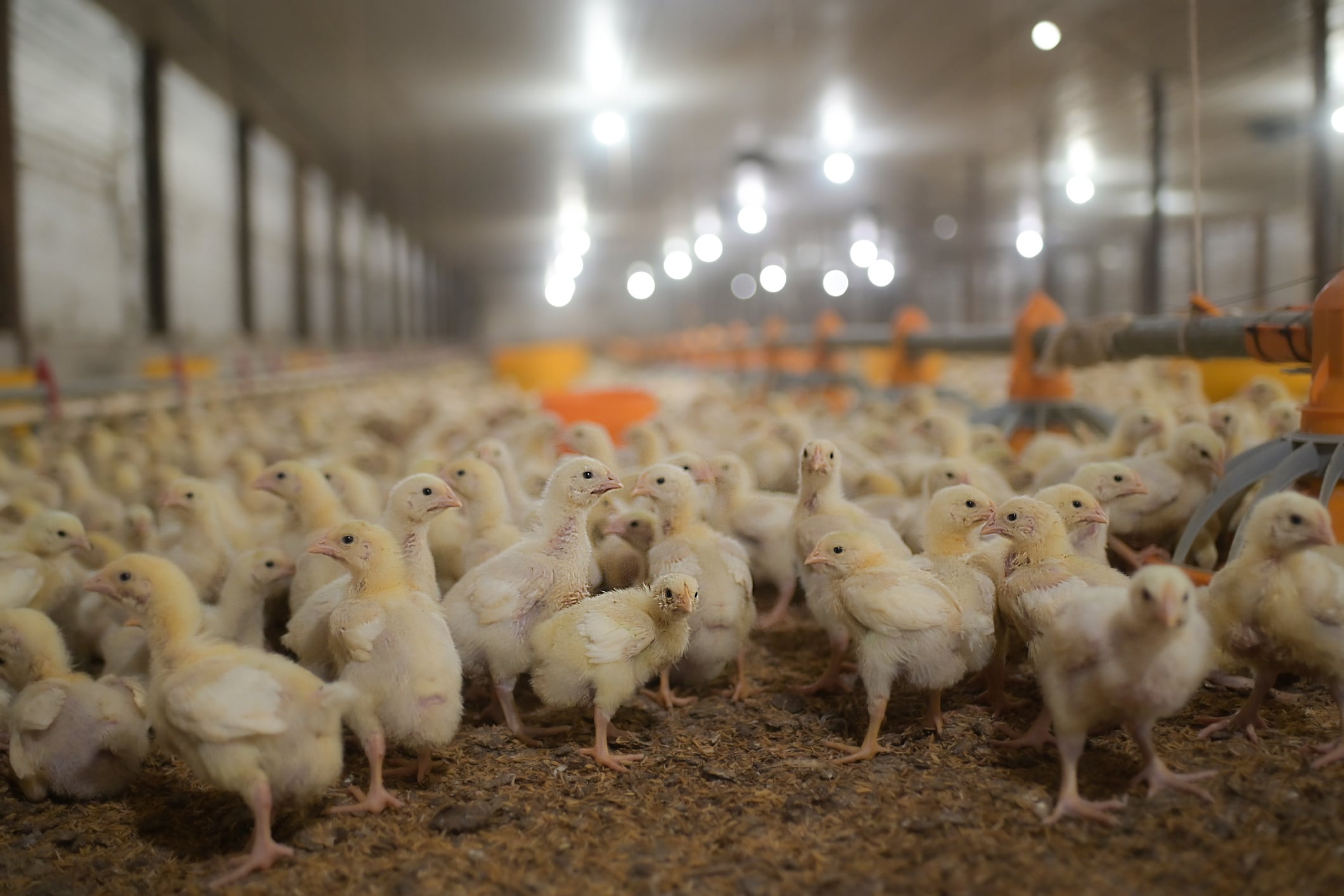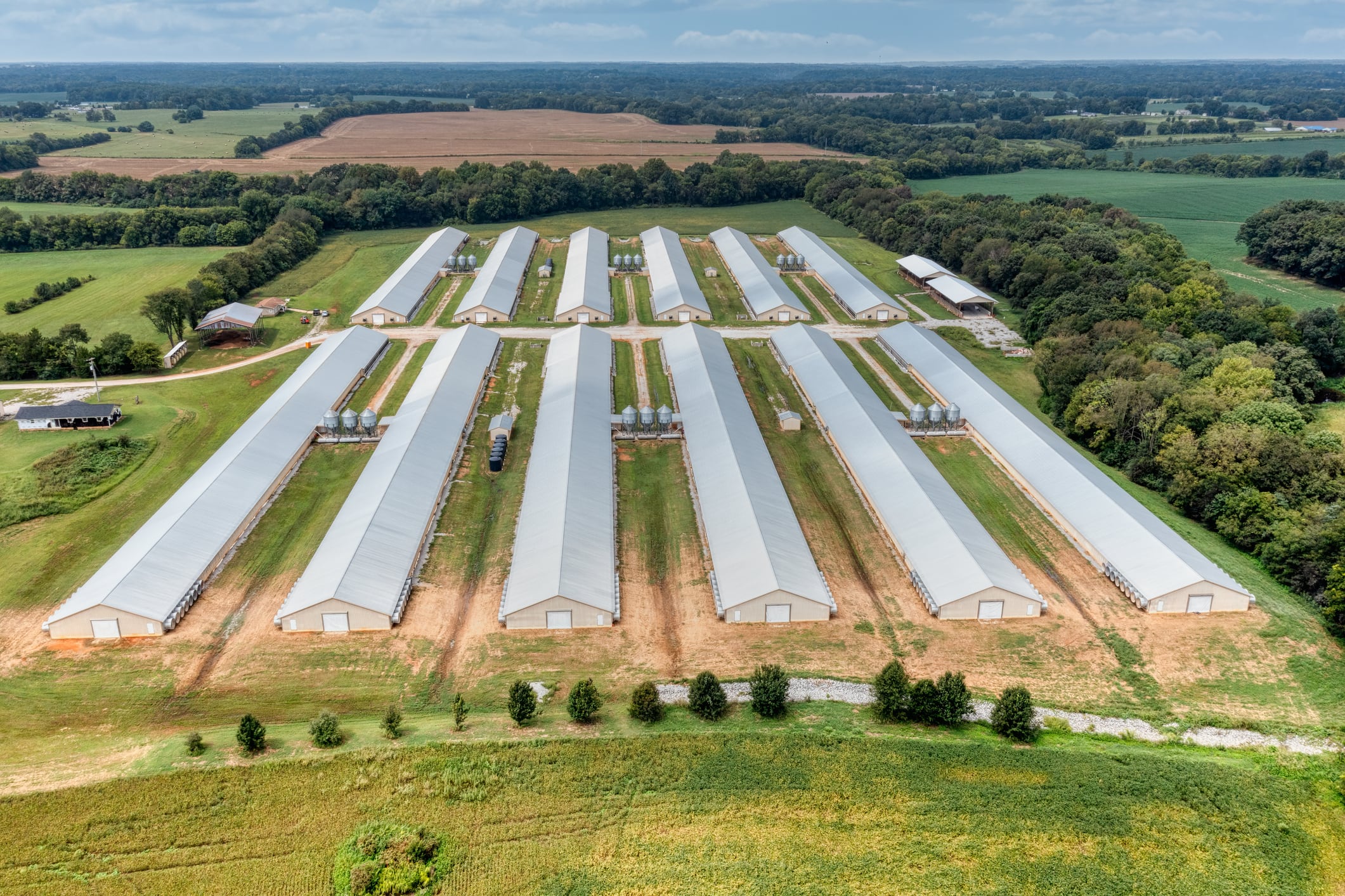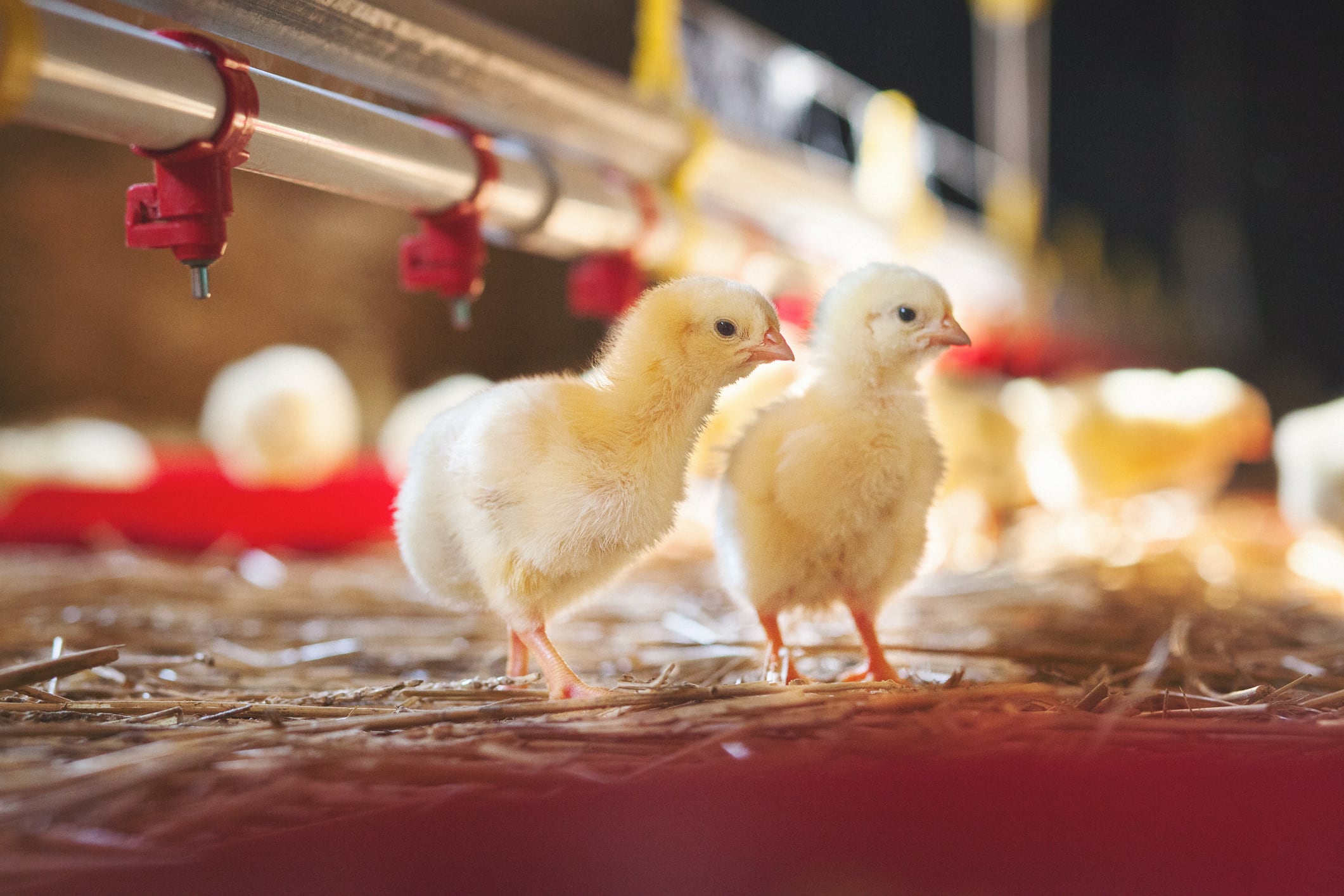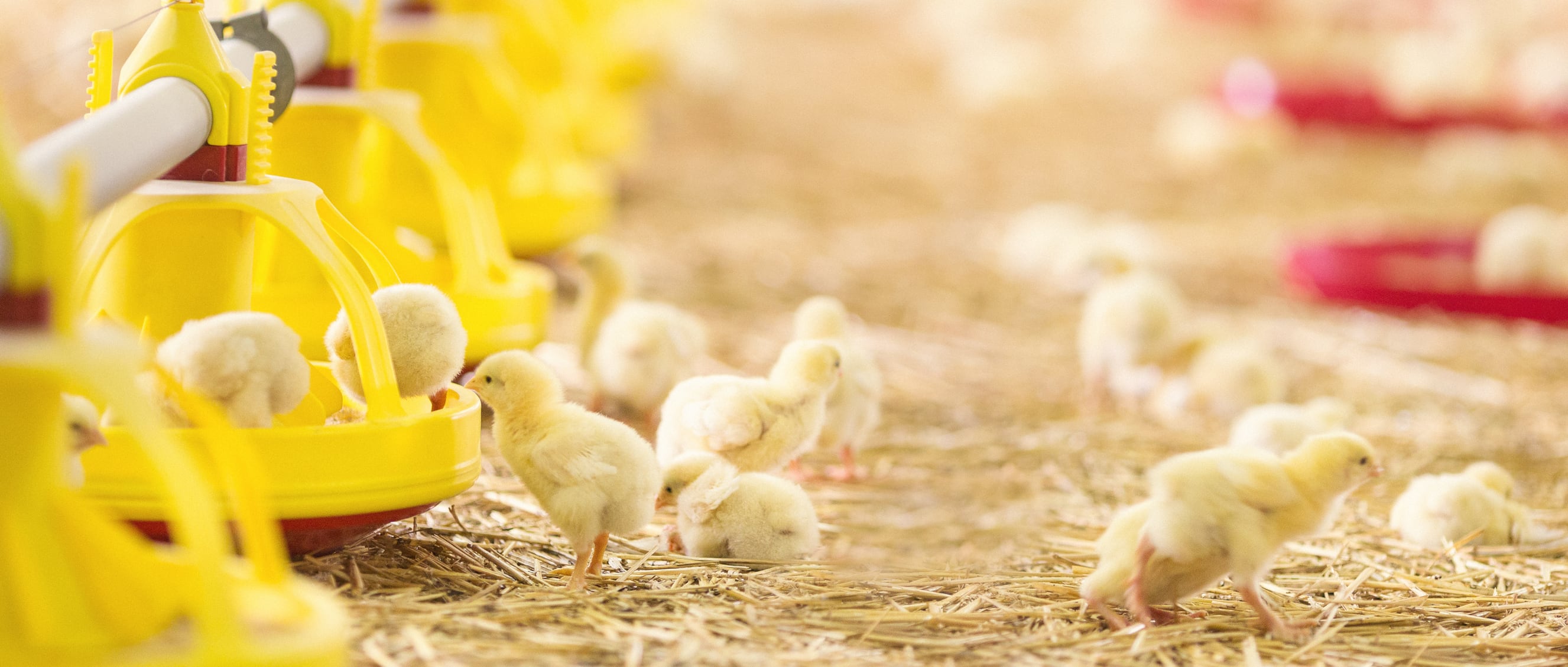With US poultry producers facing persistent challenges from subclinical necrotic enteritis - BiomEdit, a pioneering biotech firm, is introducing an approach that it believes could transform animal health and productivity.
In a wide-ranging interview at the Animal AgTech Innovation Summit in Dallas in April, Aaron Schacht, CEO of BiomEdit, revealed promising new developments in how the company is tackling that disease.
As the industry continues its shift away from antibiotics, subclinical necrotic enteritis remains a costly and underdiagnosed issue - silently degrading gut health, feed efficiency, and growth rates, stressed the CEO.
While poultry producers have long battled the gut disease caused by Clostridium perfringens (C. perfringens), Schacht told us current tools only suppress outbreaks without eliminating the underlying threat.
BiomEdit’s solution, named BE-101, is designed to address subclinical necrotic enteritis.
“We emphasize subclinical because while current tools used by producers help control the disease, they don’t eliminate it. There’s always a residual burden of disease that remains unresolved. In fact, some of the tools currently in use may inadvertently create the right conditions for necrotic enteritis to develop.
“This is because many of these tools are actually attenuated forms of the parasite responsible for coccidiosis. While they help manage the disease, they still allow a low level of infection, which can stress the gut environment. This stress sets the stage for necrotic enteritis.
“Here’s how it typically unfolds: when the gut is stressed - often due to coccidiosis - a normally harmless organism called C. perfringens (commonly found in the gut or environment of poultry) can become pathogenic. It shifts from a passive presence to an aggressive one, producing toxins that damage intestinal cells.
“When we designed BE-101, we aimed to target two key aspects: The gut stressor - primarily coccidiosis and the opportunistic pathogen - C. perfringens ,” he explained.
By addressing both the root cause and the opportunistic trigger, BE-101 offers a more comprehensive approach to managing subclinical necrotic enteritis in poultry, added Schacht.
A two-pronged, genetically engineered approach
The product is a novel bioengineered product that combines two Lactobacillus reuteri (L. reuteri) strains - identified from healthy chickens - each genetically engineered to produce antibodies that neutralize key toxins produced by C. perfringens. These include NetB and Alpha toxin, both of which damage intestinal lining and compromise poultry health.
To develop the antibodies, BiomEdit turned to an unlikely ally: llamas.
“One of the core strategies behind BE-101 is the use of a probiotic strain to help stabilize gut conditions, specifically targeting inflammation and maintaining gut integrity. We selected two strains of L. reuteri for this purpose. These strains were originally isolated from the guts of chickens as part of a broader strategy: we compared microbial populations in healthy versus diseased birds to identify organisms that thrived in healthy conditions. Those strains became our candidates.
“Next, we needed to determine how to genetically engineer these strains to actively counteract the disease challenge. Since the primary drivers of necrotic enteritis are toxins produced by C. perfringens, we focused on neutralizing those toxins.
“To do this, we used a clever immunological approach. We immunized llamas with the toxoids - specifically, the NetB toxin and Alpha toxin. Why llamas? Because camelids (including llamas, alpacas, and camels) produce a unique type of antibody known as a single-chain antibody. These antibodies are composed of a single protein chain, making them compact, stable, and highly effective in harsh environments like the gut.”
After immunization, the llamas produced a range of antibodies against the toxins.
“We harvested these antibodies, screened them for efficacy, and selected the most potent ones - one for each toxin. We then engineered each of the two L. reuteri strains to express one of these antibodies - one strain expresses the antibody against NetB toxin, the other expresses the antibody against Alpha toxin.”
The final product is a living consortium of these two engineered probiotic strains. Each one targets a different toxin, working together to neutralize the harmful effects of C. perfringens and protect the gut health of poultry, explained the CEO.
Administered as a spray at hatch and later via drinking water, the probiotic strains colonize the chick’s gut, delivering antibodies directly to where they’re needed, he continued.
Proven results
BiomEdit tested BE-101 at Southern Poultry Research Institute in Georgia, using industry-standard challenge models, in a floor pen experiment designed to mimic a commercial production system.
The product reduced mortality by 35–50% in birds exposed to both coccidiosis and C. perfringens, reported the CEO. It also improved feed conversion between 3-7 points and increased bird weight by 60 grams, he said.
Regulatory pathway
The US Department of Agriculture (USDA) has shown strong engagement with the technology. The agency is currently reviewing BE-101 for conditional licensure, which allows for earlier market entry with a ‘reasonable expectation of effectiveness,’ easing regulatory burden without compromising safety.
BiomEdit expects this milestone by Q4 2026, pending completion of environmental risk assessments, public comment periods, and final safety trials.
“This is a first-of-its-kind product,” said Schacht, “so there’s no reference case. But we’ve had consistent, interactive support from USDA and are moving steadily through the approval pipeline.”
Commercialization and market adoption
With over 9 billion broilers produced annually in the US and just 20 major integrators responsible for 97% of production, BiomEdit’s path to market is highly targeted. Pre-commercial trials - expected to begin as early as Q2 2026 - will allow integrators to trial the product in their commercial farms.
These trials will serve dual purposes, reported Schacht. They’ll satisfy regulatory field safety requirements and give producers firsthand insight into how the product can enhance their performance metrics.
“Our plan is to commercialize in the US, where we’ll lead our initial efforts. For markets outside the US, we’re looking to partner with local players, primarily because it would be challenging for a small company like ours to manage international expansion independently.”
Among international markets, Brazil stands out as the most attractive next step.
“We’re already engaging with stakeholders there, including on the regulatory front. Brazil’s regulatory system is evolving, and the country is actively working to position itself as a leader in adopting new technologies, which creates exciting opportunities for us.
“That said, Brazil is also the largest poultry export market, so we’ll need to address concerns around the use of genetically engineered inputs, particularly in the context of international trade.”
He believes the science is on the side of the company. “We’re not modifying the food-producing animal itself, but rather an organism that resides within it. That’s a fundamentally different proposition than engineering the animal directly.”
Methane inhibition
Building on the success of BE-101, BiomEdit is turning its attention to the cattle industry - where the environmental and economic stakes are equally high.
“Our technology platform was built on a foundational vision: combining a deep understanding of the animal microbiome with the tools of synthetic biology to engineer microbes capable of delivering therapeutic or biologically active molecules.
“From the beginning, we saw broad potential applications for this platform. While we had many ideas, including some early lab experiments, we didn’t initially invest in methane mitigation. That changed when we applied for and received a Gates Foundation grant, which provided the resources to scale up our efforts in this area.
“We’ve since taken what we’ve learned from studying the microbiomes of chickens and pigs and applied it to the cow’s rumen, a completely different environment. Despite the differences, there are common principles: the microbiome plays a critical role in nutrient release and animal productivity.”
One unique advantage BiomEdit had was its extensive microbial libraries - collections of organisms isolated from poultry and swine.
“We always believed that microbes from one species could be relevant to another, or at least serve as analogs. In nature, we don’t typically observe a L. reuteri from a chicken colonize a cow rumen, but in the lab we can test and adapt these organisms to do just that - unlocking biological diversity that wouldn’t naturally occur.”
Reshaping the rumen microbiome
The core issue with methane in ruminants is the presence of methanogenic archaea — microorganisms that consume hydrogen produced during feed fermentation and convert it into methane. This is a natural process, but it’s also a major source of greenhouse gas emissions.
“Some innovations aim to block methane production, but we’ve taken a different approach. Methanogens are niche dwellers - they specialize in consuming hydrogen, but they’re not essential to the cow’s survival. They’re opportunistic, taking advantage of excess hydrogen that the cow doesn’t use.
“Our hypothesis is twofold: Reshape the rumen microbiome to include organisms that are better hydrogen consumers, essentially outcompeting methanogens, and introduce a microbial consortium that produces molecules to inhibit methanogen activity directly.”
Productivity gains
This gives BiomEdit a one-two punch: Competing for hydrogen and suppressing methanogen growth and function.
“We’ve developed a program focused on feed additive technologies using naturally occurring, non-engineered organisms. From there, we explore the potential to enhance selected strains with additional capabilities, such as direct inhibition of methanogens.
“Our guiding principle is clear: no intervention is worth pursuing unless it improves productivity. The energy in the rumen, especially hydrogen, must be redirected toward protein or volatile fatty acid production, not lost as methane.”
While many companies claim methane reduction, few provide robust evidence of productivity gains.
“For us, that’s the benchmark. Methane mitigation must go hand-in-hand with enhanced animal performance.”





